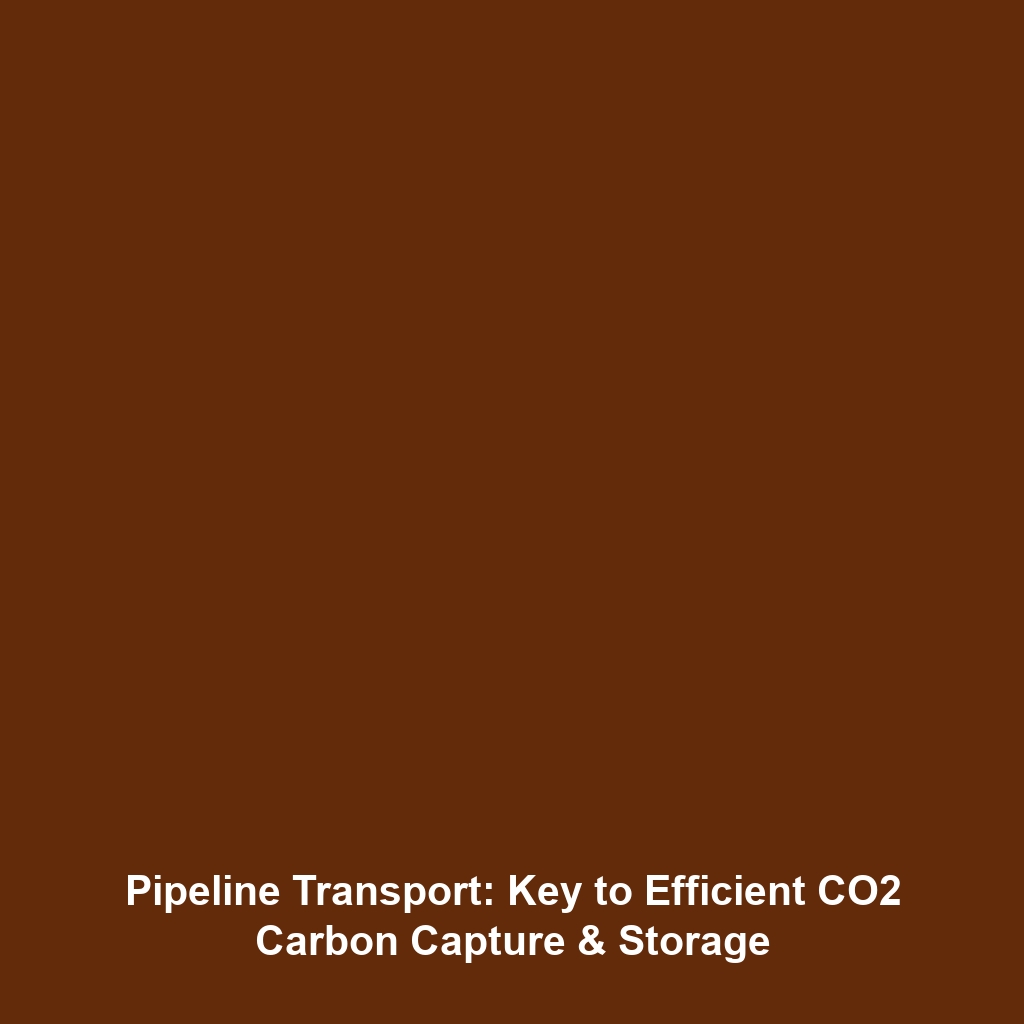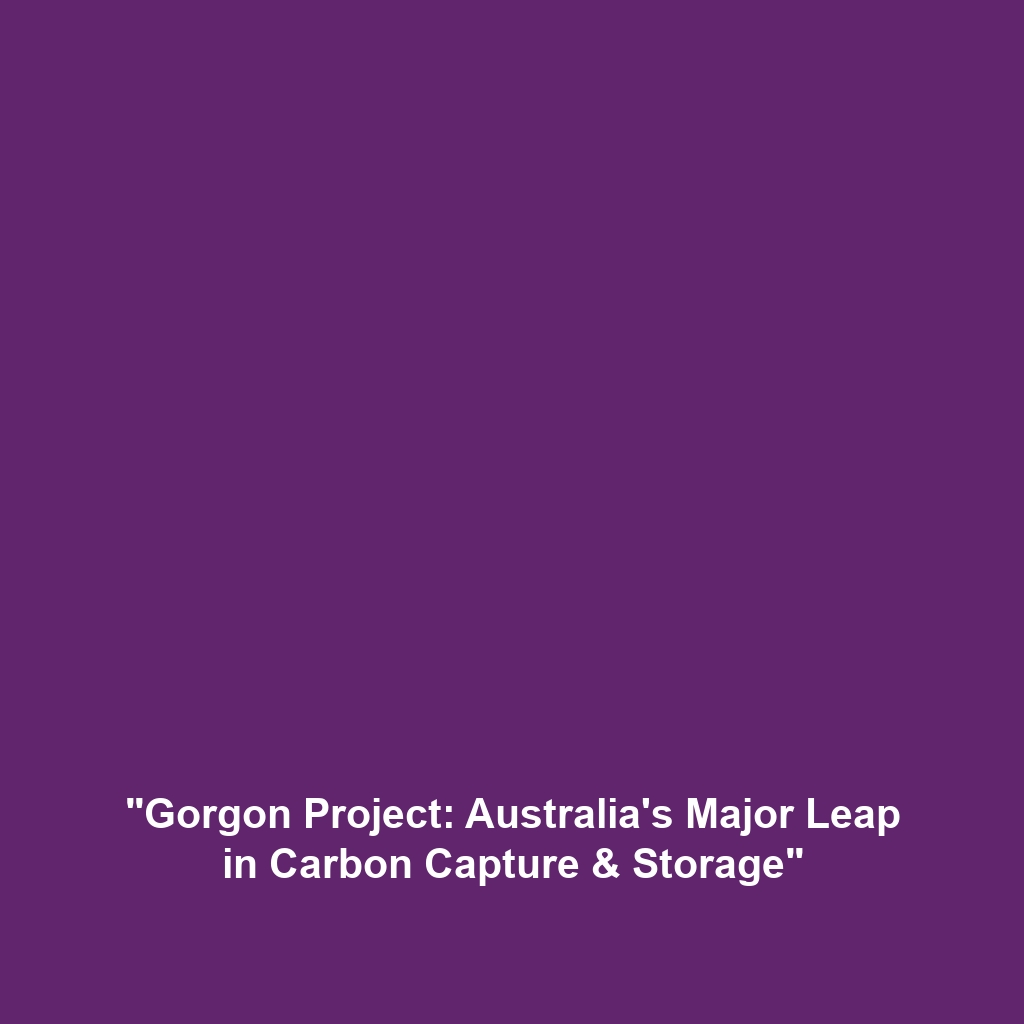Research Focused on Improving Capture Efficiency to Minimize Energy Penalty in Carbon Capture & Storage (CCS)
Introduction
Carbon Capture & Storage (CCS) is a critical technology in the fight against climate change, aimed at capturing carbon dioxide emissions from sources like power plants and industrial facilities. Recent research has been focused on enhancing capture efficiency to minimize the energy penalty associated with capturing carbon dioxide. The significance of this research lies in its potential to make CCS a more viable solution in reducing greenhouse gas emissions, thus playing a pivotal role in achieving global climate targets. By optimizing capture processes, we can improve energy efficiency and ensure that CCS becomes a mainstream technology in carbon mitigation efforts.
Key Concepts
Understanding Capture Efficiency
Capture efficiency refers to the effectiveness of interventions designed to separate carbon dioxide from other gases produced during industrial processes. Improving this efficiency is vital for reducing operational costs and the overall energy requirements of CCS technologies.
Energy Penalty in CCS
The term ‘energy penalty’ describes the extra energy required to capture carbon dioxide. Research is concentrated on developing methods and materials that lower this energy requirement, thereby enhancing the economic feasibility of CCS systems.
Applications and Real-World Uses
The applications of research focusing on improving capture efficiency in Carbon Capture & Storage (CCS) are numerous and transformative. Significant real-world uses include:
- Optimizing existing capture systems in coal-fired power plants.
- Integrating CCS with bioenergy systems to create negative emissions.
- Developing new solvents and sorbents that operate at lower energy costs.
Current Challenges
Despite advancements, several challenges remain in studying and applying research focused on improving capture efficiency:
- High Costs: Initial setup and operational costs of advanced CCS technologies are substantial.
- Material Limitations: Existing materials for carbon capture often struggle with longevity and effectiveness.
- Public Perception: Resistance and scepticism about CCS technology affect its adoption and investment.
Future Research and Innovations
The future of carbon capture technologies appears promising, with ongoing innovations aimed at improving capture efficiency. Breakthroughs include:
- Next-Generation Sorbents: Development of new materials that offer higher CO2 capacity while reducing energy costs.
- Process Integration: Innovative methods to couple carbon capture with renewable energy sources.
- Advanced Modeling Techniques: Enhanced simulations to predict capture performance and optimize processes.
Conclusion
In summary, research focused on improving capture efficiency to minimize the energy penalty is essential for advancing Carbon Capture & Storage (CCS) technologies. This research not only enhances the viability of CCS but is also crucial in combating climate change effectively. As developments continue, it is imperative for stakeholders in the industry, government, and academia to support further research initiatives. For more information on related topics, explore our articles on carbon capture techniques and sustainable energy solutions.



